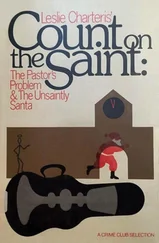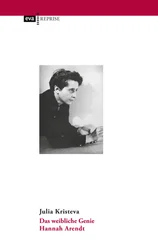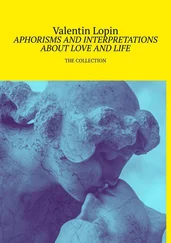13. Edmund Husserl, Ideas: General Introduction to Pure Phenomenology , § 70, trans. W. R. Boyce Gibson (London: George Allen & Unwin, 1931), 201.
14. Life , 20:2–4, CW 1:173–74.
15. Life , 16:4, CW 1:149.
16. Charles Baudelaire, Artificial Paradises , trans. Stacy Diamond (1860; New York: Citadel, 1998): “You endow the tree with your passions and desires; its capriciously swaying limbs become your own, so that soon you yourself are the tree” (51); “cause and effect, subject and object, mesmerizer and somnambulist” (25).
17. J.-L. Chrétien, L’appel et la réponse (Paris: Éditions de Minuit, 1992), 125.
18. Way , 19:3–5, CW 2:107–9.
19. Way , 19:4, CW 2:108.
20. Way , 19:6–7, CW 2:110.
21. Way , 19:8, CW 2:111.
22. Way , 19:13, CW 2:113.
23. Way , 19:9–10, CW 2:111.
24. Way , 19:10–12, CW 2:112.
25. IV D , 2:2, CW 2:323.
26. The Rubaiyat of Omar Khayyam , trans. Edward Henry Whinfield, 1883; http://therubaiyat.com/whinfield (accessed May 14, 2011).
27. Dante, The Divine Comedy , trans. Henry W. Longfellow, Paradiso , canto 19 (London: Capella, 2006), 337.
28. Pierre Ronsard, “To His Mistress,” trans. A. S. Kline, 2004; http://poetryintranslation.com (accessed May 14, 2011).
29. William Shakespeare, A Midsummer Night’s Dream , act 2, scene 1.
30. Charles Baudelaire, “To Her Who Is Too Gay,” in Selected Poems of Charles Baudelaire , trans. Geoffrey Wagner (New York: Grove, 1974).
31. Rainer Maria Rilke, “Epitaph,” trans. Erik Bendix, http://movingmoment.com/poetry/Rilke'sEpitaph.htm (May 14, 2011).
32. Philippe Sollers, Fleurs. Le grand roman de l’érotisme floral (Paris: Hermann Littérature, 2006).
7. THE IMAGINARY OF AN UNFINDABLE SENSE
1. Aristotle, Metaphysics , ed. and trans. John Warrington (London: Dent, 1956), 346: “Now thought does think itself, because it shares in the intelligibility of its object. It becomes intelligible by contact with the intelligible, so that thought and object of thought are one.”
2. In Jewish mysticism, the contemplation of God’s Throne-Chariot ( Merkabah ) is the goal of a long journey through the Hekhalot or celestial palaces/temples (cf. the treatises on the Great Hekhalot, or Hekhalot Rabbati , the Small or Hekhalot Zutarti , etc.). This ascent toward the seven heavenly abodes forms part of the synagogal liturgy and features in a more secret scholarly language, the Shi’ur Qomah.
3. See Maimonides, A Guide for the Perplexed , trans. M. Friedlaender (New York: Dutton, 1904).
4. Cf. St. Augustine, De Trinitate [ The Trinity ] (399–419), trans. Edmund Hill (New York: New City Press, 1991).
5. I D , 1–3, CW 2:283–4.
6. D, Epilogue : JHS, CW 2:451.
7. Bernardino de Laredo: 1482–1540.
8. Luis de la Palma: 1560–1641.
9. Ignatius Loyola, Spiritual Exercises , Second Annotation: “For it is not knowing much, but realizing and relishing things interiorly [ mas el sentir y gustar de las cosas internamente ], that contents and satisfies the soul.”
10. Jerónimo Nadal: 1507–1581. See his “Oraison pour ceux de la compagnie Mon. N. 4,” quoted in Victoriano Larrañaga, Sainte Thérèse d’Avila, Saint Ignace de Loyola: Convergences (Paris: Pierre Téqui Éditeur, 1998), 125.
11. I D , 2:5, CW 2:290.
12. I D , 2:8, CW 2:291.
13. IV D , 2:1–2, CW 2:323.
14. IV D , 2:2–4, CW 2:323–24.
15. IV D , 2:6, CW 2:324.
16. IV D , 3:2, CW 2:328.
17. VII D , 2:11, CW 2:438.
18. VI D , 2:6, CW 2:369.
19. Cf. Francisco de Osuna, The Third Spiritual Alphabet , trans. and with an introduction by Mary E. Giles (Mahwah, N.J.: Paulist, 1981).
20. IV D , 3:2, CW 2:327–28.
21. VI D , 4:4, CW 2:380.
22. VI D , 6:10, CW 2:395.
23. VII D , 1:3, CW 2:428.
24. VI D , 2:6, CW 2:369.
25. I D , 2:7, CW 2:290.
26. Testimonies , 26, CW 1:399.
27. V D , 2:2–5, CW 2:341–3. Compare with the reading of this passage by Michel de Goedt, “La prière de l’école de Thérèse d’Avila aujourd’hui,” in Recherches et expériences spirituelles, Conférences (Paris: Cathedral of Notre-Dame de Paris, 1982).
28. Letter 237, to María de San José, March 28, 1578, CL 2:46.
29. VI D , 5:1, CW 2:386.
30. VII D , 2:1–3, CW 2:432–33.
31. The practice of “fiction” in Teresa can be approached in the light of Jean Ladrière’s interpretations of “the language of the spirituals,” or mystics, marked by the linguistic theories of D. D. Evans and J. L. Austin (Jean Ladrière, “Le langage des spirituels” [1975], in L’Articulation du sens [Paris: Éditions du Cerf, 1984]). Descriptive at the same time as engaging the affective and sensory experience of both speaker and hearer, the language of such spirituals is posited as a “self-implicating act,” consisting in “rendering what is uttered actually the case in it; in this sense, one can say that the act of faith is the effectuation of its content” (79). Further, “there is a genuine continuity between the language of the spirituals and their experience; experience is prolonged in and by the word [ parole ], while the latter enriches experience by endowing it with structure and intelligibility” (80). Therefore if any truth is contained in this powerfully analogical, allegorical, and symbolic language, its credibility “can only be established by means of a detour, regardless of the language in which it is proposed.” This “detour” being defined as “a genuine affinity with the person speaking,” the “spiritual language consequently becomes a “language of affinity” (82–83) (my translation — LSF).
32. VI D , 5:2–3, CW 2:386–87.
33. VII D , 2: 3–6, CW 2:434–35.
34. Yirmiyahu Yovel, The Other Within: The Marranos. Split Identity and Emerging Modernity (Princeton: Princeton University Press, 2008); The Mystic and the Wanderer: Conversos in the Culture of Golden Age Spain , forthcoming (in Hebrew).
8. EVERYTHING SO CONSTRAINED ME
1. Teresa is reported to have said to Juan de la Miseria: “Dios te perdone, fray Juan, que ya que me pintaste, me has pintado fea y legañosa.” Esteban García-Albea, “La epilepsia extática de Teresa de Jesús,” Revista de neurología 37, no. 9 (2003): 880.
2. Found ., 17:6, CW 3:180–81.
3. Marcelle Auclair, La vie de sainte Thérèse d’Avila (Paris: Seuil, 1950); Rosa Rossi, Esperienza interiore e storia nell’autobiografia di Teresa d’Avila (Bari: Adriatica Editrice, 1977); Dominique de Courcelles, Thérèse d’Avila, femme d’écriture et de pouvoir dans l’Espagne du Siècle d’Or (Grenoble: J. Million, 1993); Mercedes Allende salazar, Thérèse d’Avila, l’image au feminine (Paris: Seuil, 2002); Alison Weber, Teresa of Avila and the Rhetoric of Feminism (Princeton: Princeton University Press, 1996); Gillian T. W. Ahlgren, Entering Teresa of Avila’s Interior Castle (New York: Paulist, 2005); Mary Frohlich, The Intersubjectivity of the Mystic: A Study of Teresa of Avila’s Interior Castle (Atlanta: Scholars Press, 1994); Michel de Certeau, The Mystic Fable , op. cit.; Denis Vasse, L’Autre du désir et le Dieu de la foi (Paris: Seuil, 1991); Jean-Noël Vuarnet, Le Dieu des femmes (Paris: Editions de l’Herne, 1989); Américo Castro, Teresa la santa y otros ensayos (Madrid: Alianza, 1982); and De la edad conflictiva. Crisis de la cultura española en el siglo XVII (1961; repr. Madrid: Taurus, 1972); Antonio Márquez, Los alumbrados (Madrid: Taurus, 1972); Marcel Bataillon, Erasme et l’Espagne (Geneva: Droz, 1998).
Читать дальше












